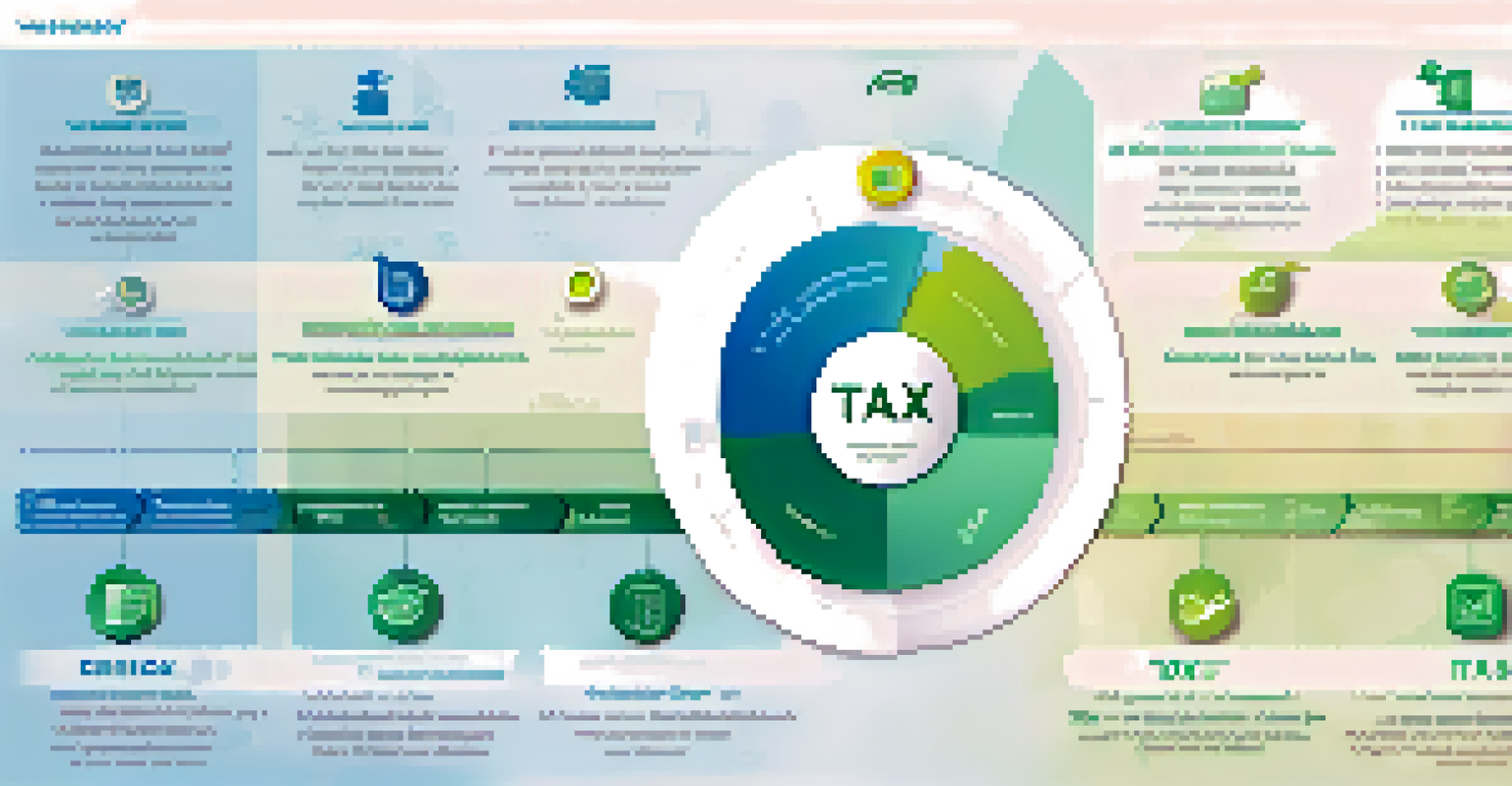Understanding Your Tax Return: Key Elements of Refunds

What is a Tax Return and Why It Matters
A tax return is a document you file with the IRS, detailing your income and expenses for the year. Essentially, it's a snapshot of your financial situation that helps determine whether you owe taxes or are due a refund. Understanding your tax return is crucial as it impacts your financial health and can affect future financial decisions.
In this world, nothing can be said to be certain, except death and taxes.
When you file a tax return, you're essentially reporting how much money you made and how much tax you’ve already paid through withholding or estimated payments. This information helps the IRS calculate whether you've overpaid or underpaid your taxes. If you’ve overpaid, you’re likely to receive a refund, which is always a pleasant surprise.
Moreover, knowing how to read and understand your tax return can empower you to make better financial choices. It can help you identify areas where you might save on taxes in the future, such as deductions or credits you may have overlooked. In short, grasping the basics of your tax return is not just about compliance; it's about financial savvy.
Key Components of Your Tax Return
Your tax return consists of several key components, including your income, deductions, credits, and ultimately, your tax liability. Each of these elements plays a critical role in determining whether you get a refund or owe money. For instance, your income is the starting point, and it includes wages, interest, and other earnings.

Deductions reduce your taxable income, which can significantly impact your refund. Common deductions include mortgage interest and student loan interest, but there are many others. Understanding which deductions you qualify for can lead to a larger refund, so it’s worth doing a bit of research or consulting a tax professional.
Understanding Your Tax Return
A tax return is essential for assessing your financial situation, determining tax liabilities, and identifying potential refunds.
Tax credits, on the other hand, directly reduce the amount of tax you owe, making them even more valuable. For example, credits for education expenses or childcare can substantially increase your refund. By familiarizing yourself with these components, you can better navigate your tax return and maximize your potential refund.
How Tax Refunds are Calculated
Calculating your tax refund involves a few straightforward steps. First, you determine your total income, then subtract any eligible deductions to find your taxable income. From there, you apply the appropriate tax rates to calculate your tax liability.
The hardest thing in the world to understand is the income tax.
Next, you compare your tax liability to the total amount of tax you've already paid throughout the year, either through withholding from your paycheck or estimated tax payments. If you've paid more than your tax liability, the difference is your refund. It’s like having a financial safety net; if you over-contribute, you get that money back.
This process highlights the importance of accurate record-keeping and understanding your tax situation throughout the year. By keeping track of your income and expenses, you can make informed decisions about your withholding and potentially avoid surprises when tax season rolls around.
Common Reasons for Receiving a Refund
Many taxpayers are pleasantly surprised to find out they are due a tax refund each year. One of the most common reasons for this is having too much tax withheld from their paycheck. Employers often withhold taxes based on the information provided on your W-4 form, and if your withholdings are higher than necessary, you’ll receive a refund.
Another reason for a refund can be claiming deductions or credits that reduce your tax liability. For example, if you’re eligible for the Earned Income Tax Credit (EITC) or child tax credits, these can significantly lower your taxes owed, potentially resulting in a refund. It’s like finding unexpected cash in your pocket!
Key Components of Tax Returns
Income, deductions, and credits are crucial elements that influence your overall tax liability and potential refund.
Additionally, life changes such as marriage, having children, or buying a home can also lead to a larger refund. These milestones often come with new tax benefits that can reduce your overall tax burden. Staying updated on your finances and tax laws can help you take advantage of these opportunities.
Common Mistakes That Delay Refunds
While it’s exciting to anticipate a tax refund, there are common mistakes that can delay its arrival. One of the most prevalent issues is errors on your tax return, such as incorrect Social Security numbers or misspelled names. Even small mistakes can lead to processing delays, so double-checking your return is crucial.
Another mistake is not e-filing or choosing to file a paper return instead. E-filing is typically faster and more efficient, often resulting in quicker refunds. The IRS processes electronic returns more swiftly, which means less waiting for your hard-earned money.
Finally, failing to sign and date your return can also hold up your refund. It may seem minor, but this simple oversight can lead to unnecessary delays. Taking the time to carefully review your return before submission can save you a lot of time and frustration down the line.
When to Expect Your Tax Refund
Once you've filed your tax return, you may be eager to know when your refund will arrive. Generally, the IRS issues refunds within 21 days for electronically filed returns and longer for paper returns. However, several factors can affect this timeframe, including the complexity of your return and whether the IRS needs to verify any information.
To track the status of your refund, you can use the IRS 'Where's My Refund?' tool on their website. This resource allows you to check the status of your refund in real-time, providing peace of mind as you wait. It’s like having a tracking number for a package; you know exactly when to expect it.
Smart Use of Tax Refunds
Utilizing your tax refund wisely by paying down debt or investing can significantly enhance your financial health.
If you filed your return early in the tax season, you might receive your refund sooner. Conversely, filing closer to the deadline can lead to longer wait times due to the sheer volume of returns being processed. Staying informed and utilizing available resources can help ease the process.
Tips for Making the Most of Your Tax Refund
Receiving a tax refund can feel like a windfall, but how you use that money can greatly impact your financial future. One of the best ways to utilize your refund is to pay down debt, particularly high-interest credit card debt. Reducing debt not only decreases your financial burden but can also improve your credit score.
Another smart option is to invest your refund, whether that means putting it into a retirement account or a savings account for future goals. Investing in your future can yield greater returns down the line, making your refund work for you. Think of it like planting a seed; the more you nurture it, the more it will grow.

Lastly, consider setting aside a portion of your refund for emergencies or unexpected expenses. Building an emergency fund can provide a safety net for life's uncertainties, allowing you to feel more secure. By being strategic about your tax refund, you can set yourself up for greater financial stability.